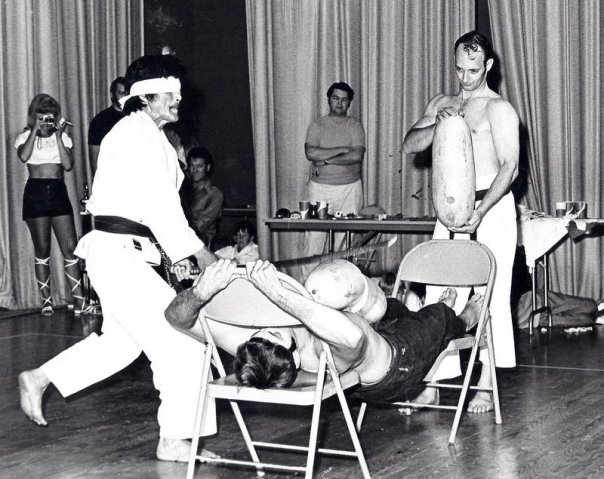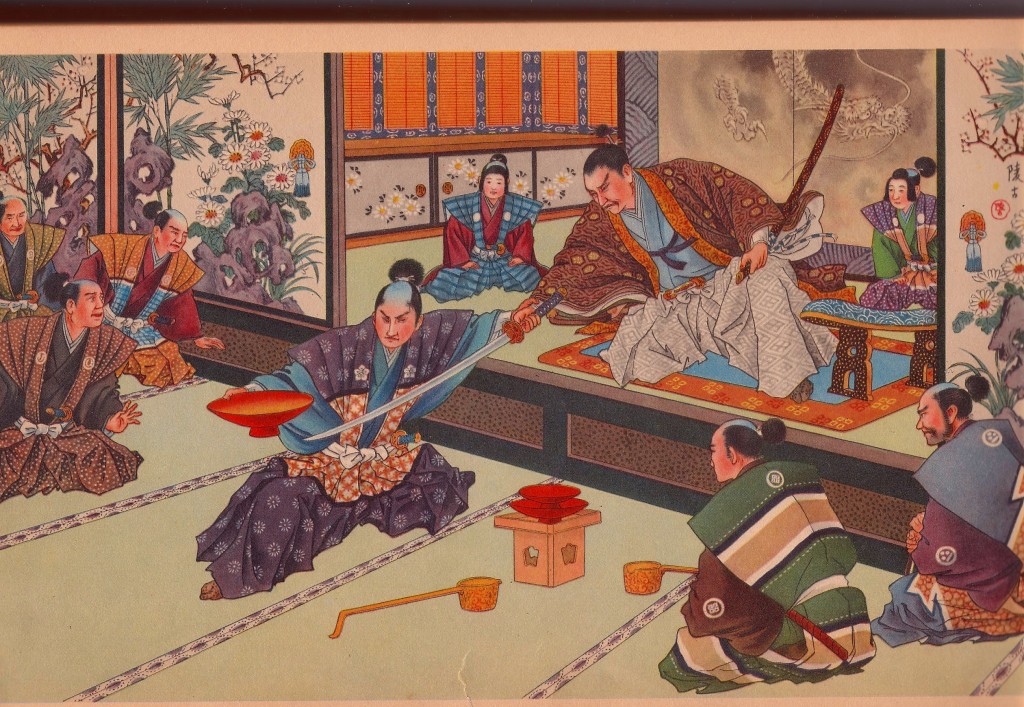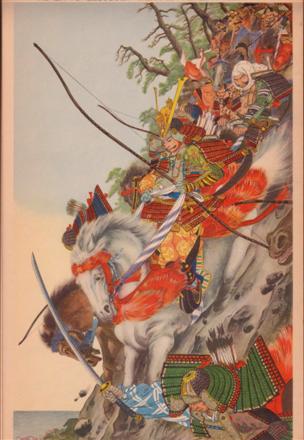| Museum of Sport Karate |
|||||||
| Go Back | |||||||
|
House of Japan |
|||||||
 |
|||||||
|
BUDO, THE CODE OF BUSHIDO, ARCHERY, CALIGRAPHY, JUDO, AIKIDO, KARATE, SUMO, KENDO, IAIDO, KATA, KOBUDO WEAPONS. More than the Samurai and KarateFor many folks, mention the Japanese martial arts and they’ll immediately have visions of actors Toshiro Mifune or Tom Cruise slicing through the air with katana. And certainly, the Samurai have a prominent place in the history of the martial arts in the Land of the Rising Sun. But we want to concentrate here on the empty handed arts of Japan. Perhaps the oldest martial practice involves jujutsu, or the “art of flexibility” or “pilance.” Techniques included striking, throwing, choking, and joint locks. Some historians say the Samurai practiced jujutsu as an adjunct to their weapons skills while other maintain that jujutsu was a commoners art. Whichever is was in ancient times, jujutsu did give rise to the modern arts of judo and aikido. Jigoro Kano (pronounced Kano Jigoro in Japan) came up with his derivative which eliminated some of the more violent aspects of jujutsu to create a sport (in fact, Judo was the first martial art to be included in the Olympic Games in 1964). Morihei Ueshiba developed aikido (the way of harmonizing with the spirit) from his study of the art of Daito Ry Aiki Jujutsu. As the name implies, it stresses philosophical and mental discipline along with physical technique. Karate (which was actually an Okinawan import to Japan in the late 19th and early 20th century) encompasses many dozens of schools around the country. Shotokan (the original Japanese school founded by Gichin Funakoshi), Wado Ryu, Kyokushin Kai, Shito Ryu and Shorinji Kenpo are just some of the Japanese styles popular today. It was Funakoshi who is said to have popularized the term “karate” itself, having changed the meaning of the phrase from “way of the China hand,” the name used in Okinawa) to “way of the empty hand,” the Japanese translation). Karate training consists of the three “k”s, or kihon (basics), kata (single person drills), and kumite (sparring). Most Japanese schools take a stricter approach than the Okinawan schools with heavy emphasis on physical conditioning and repetitive drills. The Japanese systems are also more likely to participate in the sporting aspects of karate with several tournaments held across the nation every year. KATA, is the essence of all what we do in karate, BUNKAI is the application of ones technique When performing Kata the judges must see power, speed, and purpose of ones movement. IAIDO, The drawing of the sword is a process of mastery practice in motion, to see a master of the sword draw and defend himself with Kantana {long sword} or short sword {Wakisashi} is poetry in a cherry blossom world. Here are the families OF IAIDO {more info will come} THE INTRODUCTION TO SHOTOKAN KARATE to the world in 1922 by Gician Funakoshi In the sixties you had the hard fighters American heroes of sport karate men like Mike Stone, Chuck Norris, Bob Wall, J Pat Burleson and the very quiet heroes only the great ones knew about guys like Ken Knudson, Bill Wallace, Glenn Keeney and one of my favorites Frank Smith . The Japanese fighters have always thought that they were the best at fighting but Mr. Smith not only beat the best fighters consistently in state and world competition, with that still talked about technique front kick reverse punch that broke so many ribs, he was so brutal and so controversial in his fighting he was banded by the Japanese government in sport competition. How did Karate developed into a Sport? Why do points at all? Where did the two point kick come from? How did the Japanese Pure Shotokan Fighters and the Kyokushin Fighters differ All these questions will be answered soon, I ‘m excited too! {more info is coming}
|
|||||||





